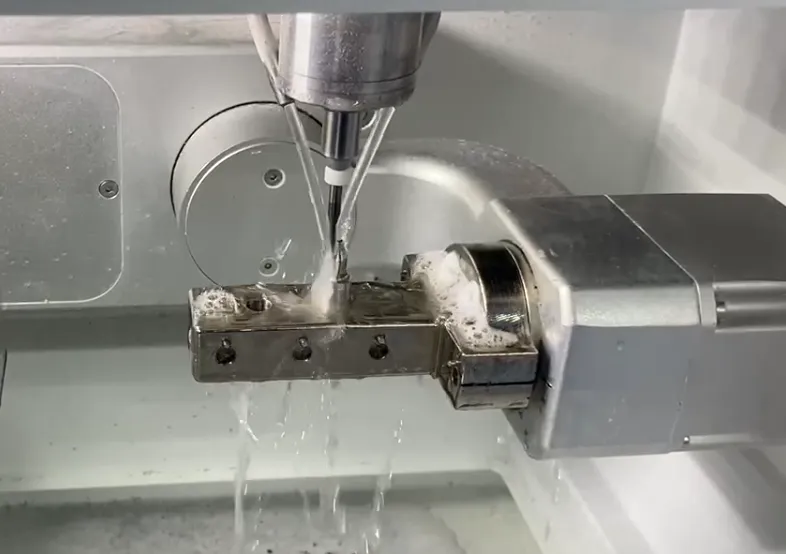Digital dentistry has transformed the way dental restorations are produced. At the center of this transformation is the zirconia milling machine—a tool that enables dental labs and clinics to create precise, highly aesthetic restorations with speed and consistency. From single crowns to long-span bridges, zirconia milling machines have made it possible to achieve levels of accuracy and efficiency that were previously unthinkable.
But simply owning a milling machine does not guarantee efficiency. Like any advanced piece of technology, performance depends on how well it is understood, maintained, and integrated into a workflow. Efficiency in milling is not just about speed—it’s about achieving consistent quality, extending the lifespan of your machine and tools, and minimizing waste of time and materials.
This article will dive deeper into the strategies and technologies that can help you maximize efficiency in zirconia milling, from understanding your machine’s mechanics to leveraging advanced software and optimizing your digital workflow.

Before optimizing performance, it’s essential to understand how each component of your machine contributes to efficiency.
Spindle & Motor: Provide the cutting power and stability. Higher-quality spindles reduce vibration, ensuring precision and extending tool life.
Axis System (3-, 4-, or 5-axis): Determines the degree of freedom in milling. A 5-axis system offers maximum flexibility and accuracy for complex restorations.
Burs and Cutting Tools: Designed for different materials (zirconia, glass ceramics, PMMA, titanium). The right bur improves accuracy and prevents tool wear.
Tool Changer & Holders: Automates switching between tools, saving time in multi-step milling jobs.
Dust Extraction / Coolant System: Keeps the working environment safe and prevents overheating of both materials and tools.
Understanding how each part functions allows technicians to detect issues early (e.g., unusual vibration, overheating, or tool chipping) and make adjustments before production quality suffers. This knowledge is also key when fine-tuning machine parameters for maximum output.
Place the machine on a stable, vibration-free surface.
Calibrate axis movement regularly for consistent accuracy.
Double-check zirconia block positioning to avoid misalignment.
High-quality zirconia blocks ensure smoother milling, reduce tool wear, and minimize remakes.
Consider pre-shaded or multilayer zirconia blocks to cut down post-processing steps like staining and shading.
Adjust cutting speed, feed rate, and depth of cut based on the specific restoration and material.
Avoid generic factory settings—optimized parameters save both time and tools.
Keep a logbook of proven parameter settings for repeatability.
Daily cleaning prevents zirconia dust buildup.
Replace burs before they are fully worn to avoid chipping restorations.
Schedule professional servicing to maintain motor and spindle efficiency.
Invest in continuous training so technicians fully understand software, materials, and machine operation.
Skilled operators can anticipate problems and adjust parameters in real time, avoiding costly errors.
Software is as important as the machine itself. The right CAM software can significantly reduce waste and processing time.
Simulation & Preview: Allows technicians to visualize restorations and detect errors before milling begins.
Optimized Tool Paths: Minimizes unnecessary movements, reducing both milling time and tool wear.
Automated Nesting: Efficiently arranges multiple restorations in one zirconia disc, maximizing material usage.
Integration with CAD: Seamless link between design and milling ensures accuracy.
MillBox (CIMsystem): Known for user-friendly workflow and advanced nesting features.
HyperDENT (Follow-Me!): Favored by labs for powerful customization and efficiency in tool path optimization.
DentalCAM (Dentsply Sirona): Perfect for clinics using integrated CAD/CAM workflows.
When selecting software, consider not only compatibility with your milling machine but also the level of support, training, and updates provided by the vendor.
Efficiency does not begin or end with the milling process. It depends on the entire digital workflow:
Scanning: High-quality digital impressions reduce design and milling errors.
Design (CAD): Well-designed restorations require less milling time.
Post-Processing: Using zirconia materials that require minimal finishing (e.g., pre-shaded or multilayer) saves time.
Data Management: Cloud-based workflow integration ensures all team members work from the same design files, reducing remakes.
By viewing milling as part of a larger ecosystem, dental professionals can unlock even greater efficiency gains.
A European lab reduced milling time by 25% by switching to multilayer zirconia blocks and adopting MillBox software with optimized nesting. They also extended tool life by 30% through routine bur replacement.
A prosthodontist integrated an in-house zirconia milling machine with a chairside scanner. By using pre-shaded zirconia and automated CAM software, the clinic cut turnaround time for single crowns from 5 days to 24 hours, boosting patient satisfaction.
Material quality directly impacts speed and outcome.
Software optimization reduces waste and machine wear.
Preventive maintenance avoids costly downtime.
Maximizing efficiency with your zirconia milling machine is about more than running it faster—it’s about working smarter. By understanding each component of the machine, optimizing setup, selecting high-quality materials, fine-tuning parameters, and integrating advanced software, dental professionals can achieve consistent, high-quality results while saving time and costs.
Remember: a well-maintained machine, supported by skilled operators and robust software, is not just an investment in equipment—it’s an investment in the long-term success of your dental practice or laboratory.
Tags: zirconia milling machine, dental milling efficiency, CAD/CAM dentistry, dental lab workflow, zirconia restorations